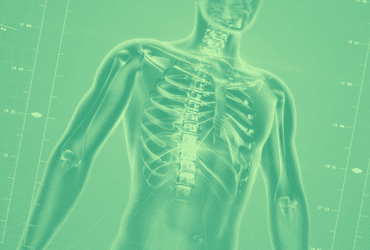The Endocannabinoid System and Cannabis: How It Works
If you want to understand how cannabis works in our bodies, you need to learn about the endocannabinoid system. This system, which Harvard Health Publishing describes as “essential and mysterious,” actually got its name from our favorite plant. We won’t argue about it being essential—but in this article, we’re going to cut through some of the mystery and explore how the endocannabinoid system helps keep our bodies in balance.

What Is the Endocannabinoid System?
The endocannabinoid system (ECS) is a complex network of signals and receptors within your body that regulates the central nervous system and many bodily functions. Sleep, appetite, pain management, inflammation, and cortisol production are just a few things the ECS influences. Endocannabinoid receptors reside in the brain, connective tissues, glands, immune cells and organs. While the ECS performs different functions across different types of tissue, it always works toward the same goal: to maintain a stable internal balance and ensure that all the organs are functioning optimally. This crucial equilibrium is called homeostasis. Whether you consume cannabis or not, your ECS works to keep your body in balance. When consumed, the cannabinoids found within cannabis can influence this system in various beneficial ways.
The endocannabinoid system regulates an impressive variety of bodily functions, including but not limited to:
- Eating and appetite
- Metabolism
- Pain
- Sleep
- Inflammation
- Nausea
- Depression
- Illness
- Stress
When the endocannabinoid system is out of balance, we may experience symptoms in one or several of these systems. We lose our appetite, inflammation sets in, we get stressed or we can’t sleep. For many of us, when our endocannabinoid system is out of equilibrium, appropriate cannabis consumption can help the body regain balance.
How the Endocannabinoid System Works
The endocannabinoid system works via a network of endocannabinoids—molecules made by your body—that are responsible for sending regulatory signals when things get out of balance. These messages carried by the endocannabinoids are received by cellular receptors that put the body’s regulators into action. Through this messaging system, the ECS acts, as renowned cannabis researcher Dr. Dustin Sulak puts it, like a “bridge between the body and mind.”
That “bridge” is a system of immediate feedback. Endocannabinoid receptors that are embedded throughout the body’s cell membranes—in greater numbers than any of the body’s other receptors—provide input to neurotransmitters. The body responds by increasing or decreasing activity levels across its various systems, from stress levels to pain response and beyond. This system acts as a metaphorical thermostat to keep our bodies constant.
CB1 and CB2 Receptors
Endocannabinoid receptors fall into two key categories: CB1 and CB2 receptors. Receptors primarily found in the central nervous system are CB1 receptors, which help regulate functions among organs, glands, gonads and connective tissues. Meanwhile, those primarily found in the peripheral nervous system—usually in immune cells—are CB2 receptors. Naturally, CB2 receptors assist the body in regulating and balancing immune responses.
The receptor that endocannabinoids bind to affects the body’s response, in turn affecting its balance. For instance, endocannabinoids might bind to CB2 receptors to regulate an inflammatory response (as inflammation often occurs in damaged tissue), or they might attach to CB1 receptors to send signals that ease back pain.
How Cannabis Interacts With the Endocannabinoid System
Cannabis has a range of unique interactions with the ECS. Like endocannabinoids, the phytocannabinoid tetrahydrocannabinol (THC), the primary psychoactive compound in cannabis, binds to the receptors of the ECS. Unusually, this key cannabis compound can bind to either CB1 or CB2 receptors. This is one of the primary factors that allows cannabis to have such a wide range of desirable mental and physical effects. It’s also one of the reasons why cannabis, across different varieties, dosages and delivery methods, can affect individuals in different ways.
Interestingly, the way CBD—a cannabinoid without any psychoactive effects—interacts with the endocannabinoid system is still the subject of both research and speculation. According to one school of thought, CBD inhibits enzymes from breaking down endocannabinoids, thus increasing their effects. Another theory is that this popular cannabis compound interacts with an as-yet-undiscovered type of endocannabinoid receptor. We do know that CBD does not bind to both CB1 and CB2 receptors in the same way as THC. It does, however, bind to CB2 receptors. When it does, it is able to send the signals that account for its well-documented anti-inflammatory properties, according to research in the Rambam Maimonides Medical Journal.
Beyond THC and CBD, other cannabinoids like THCV, THCA and CBN all interact with the ECS in unique ways, producing a diverse array of complex outcomes in the user’s body and mind.
The Entourage Effect
The entourage effect is when cannabinoids work synergistically with terpenes, the compounds that lend different varieties of cannabis their scent and flavor profiles, to produce a more robust, holistic effect than they would alone. Because cannabis features a beautifully complex molecular profile that can include a wide variety of phytocannabinoid and terpene combinations, interactions between those cannabinoids and terpenes can produce a huge range of results. However, it’s important to note that the entourage effect is still a theory being researched to better understand how different cannabis varieties have different effects.
This entourage effect doesn’t just intensify certain effects of cannabis. It’s also the reason why some varieties may make you feel creative and clear-headed while others promote meditative states or sleep. Those terpene-cannabinoid compositions and combos are key. Also in the mix are minor cannabinoids such as THCa, THCv and CBDa, which can lead to dramatically different outcomes with regard to psychoactivity, sensations, and potential health benefits. When it comes to cannabinoids and terpenes, cannabis is greater than the sum of its parts.
A Beneficial Relationship
The diverse benefits that people experience when using cannabis are a result of the plant’s interactions with the endocannabinoid system. Some of these effects include relief from anxiety, insomnia, stress and day-to-day chronic pain. And if you’re just partaking to spark a little creativity or unwind after work, you can thank the endocannabinoid system for that, too.
Check out our online store to find the perfect products for your needs. Have questions? Call us for a free consultation!
Sources:
A Minor Review of Minor Cannabinoids. https://www.cannabistech.com/articles/an-overview-of-minor-cannabinoids/. Accessed 4 Feb. 2022.
Abioye, Amos, et al. “Δ9-Tetrahydrocannabivarin (THCV): A Commentary on Potential Therapeutic Benefit for the Management of Obesity and Diabetes.” Journal of Cannabis Research, vol. 2, no. 1, Dec. 2020, p. 6. DOI.org (Crossref), https://doi.org/10.1186/s42238-020-0016-7.
“Endocannabinoid System: A Simple Guide to How It Works.” Healthline, 17 May 2019, https://www.healthline.com/health/endocannabinoid-system.
Fine, Perry G., and Mark J. Rosenfeld. “The Endocannabinoid System, Cannabinoids, and Pain.” Rambam Maimonides Medical Journal, vol. 4, no. 4, Oct. 2013, p. e0022. PubMed Central, https://doi.org/10.5041/RMMJ.10129.
Grinspoon, Peter, MD. “Medical Marijuana.” Harvard Health, 15 Jan. 2018, https://www.health.harvard.edu/blog/medical-marijuana-2018011513085.
“The Endocannabinoid System: Essential and Mysterious.” Harvard Health, 11 Aug. 2021, https://www.health.harvard.edu/blog/the-endocannabinoid-system-essential-and-mysterious-202108112569.

